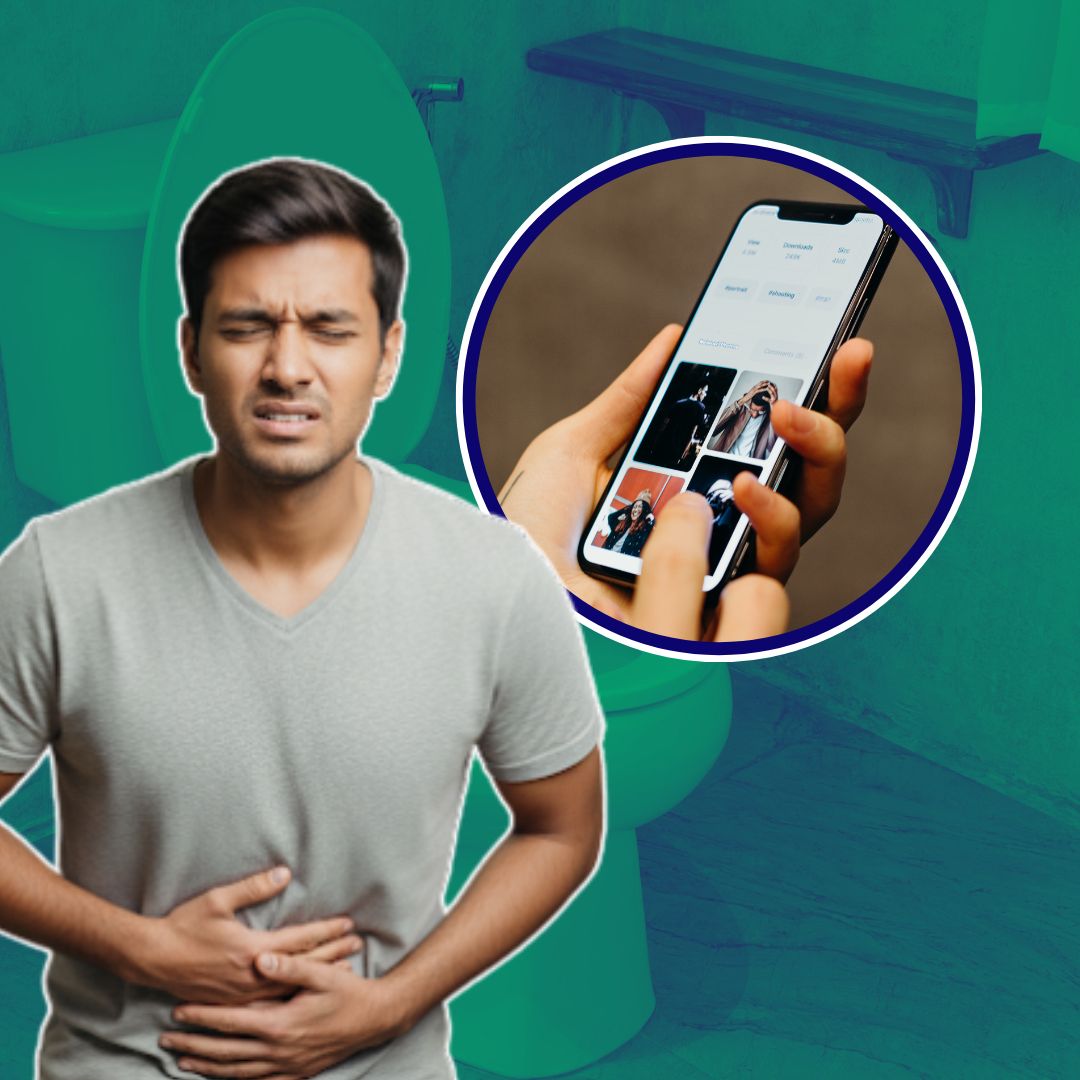A new study led by researchers at Beth Israel Deaconess Medical Center, Boston, reveals that adults who use smartphones while sitting on the toilet have a 46% higher chance of developing haemorrhoids, a painful condition involving swollen veins in the rectal area.
Based on surveys and colonoscopy screenings involving 125 adults aged 45 and above, the research found that about two-thirds of participants regularly used phones in the bathroom.
Those glued to their devices spent significantly more time in the restroom, often over five minutes per visit, compared to non-users, which researchers link to increased pressure on anal veins and subsequent haemorrhoid development.
Prolonged Sitting and Increased Pressure
The key finding of the study is that smartphone use prolongs time spent sitting on the toilet, which raises pressure within the haemorrhoidal cushions (swollen veins lining the anal canal).
About 37.3% of smartphone users spent more than five minutes on the toilet, compared to only 7.1% of non-users. Dr Trisha Pasricha, senior investigator and gastroenterologist, explained the toilet seat’s lack of pelvic support exacerbates this pressure, causing veins to engorge and inflame, thus increasing haemorrhoid risk.
Interestingly, the study found no significant connection between straining or constipation and haemorrhoids, suggesting that duration of sitting is a more accurate predictor of risk.
Common Phone Activities and Their Impact
Participants reported engaging primarily in reading news (54.3%) and scrolling through social media (44.4%) during toilet use. These activities contribute to distracted and prolonged toilet sessions, which may inadvertently cause users to remain seated longer than necessary.
This behaviour raises concerns because extended sitting on toilets is unlike sitting on supportive chairs or couches, common resting positions that distribute pelvic pressure evenly, potentially explaining the unique risk linked to bathroom smartphone use.
Background and Health Significance
Haemorrhoids are a widespread health issue, resulting in millions of medical visits annually and substantial healthcare costs worldwide. They cause symptoms ranging from itching and pain to bleeding and discomfort that affect quality of life.
Though often linked to straining during bowel movements, this study shifts the focus toward modern lifestyle habits such as smartphone use, underscoring how technology intersects with health risks in unexpected ways. Experts believe this evidence should shape clinical advice and public awareness, especially as smartphone use in bathrooms becomes increasingly common.
Expert Advice and Recommendations
Dr Pasricha and other experts emphasise limiting or avoiding smartphone use in the bathroom to reduce haemorrhoid risk. “If nothing is happening within five minutes, take a break and try again later,” suggests Dr Pasricha. Additionally, she encourages mindfulness during bathroom visits, promoting prompt and natural bowel movements without distractions.
Experts also recommend maintaining a healthy lifestyle with regular exercise and a fiber-rich diet to support digestive and rectal health.
The Logical Indian’s Perspective
This study highlights the need for awareness of technology’s subtle impacts on physical health. The Logical Indian believes in fostering mindful technology use that respects bodily needs and promotes well-being.
In an era where digital engagement is omnipresent, balancing convenience with health-conscious habits is essential. Limiting screen time in private moments like bathroom breaks embodies kindness to oneself and supports long-term wellness.
Smartphone use on the toilet and the risk of hemorrhoidshttps://t.co/u8UbiAIpzK
— Amit Paranjape (@aparanjape) September 5, 2025
The study suggests that prolonged engagement with smartphones while using the toilet may be associated with an increased prevalence of hemorrhoids. pic.twitter.com/IvYRc1W7UF












